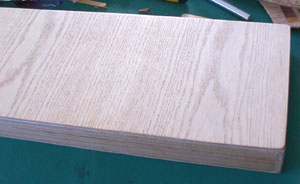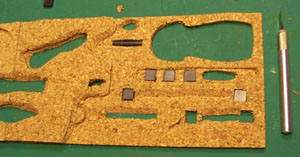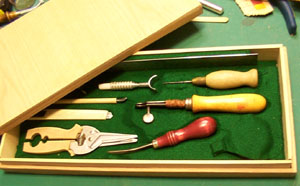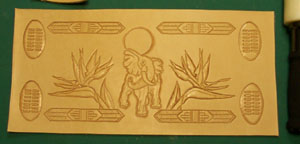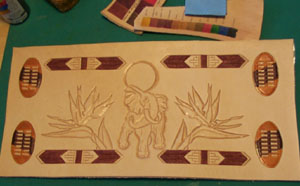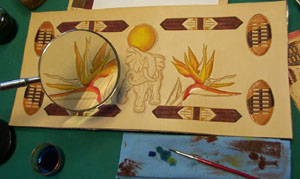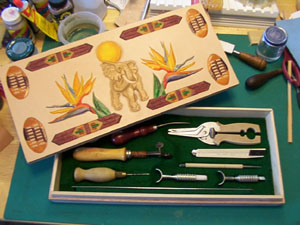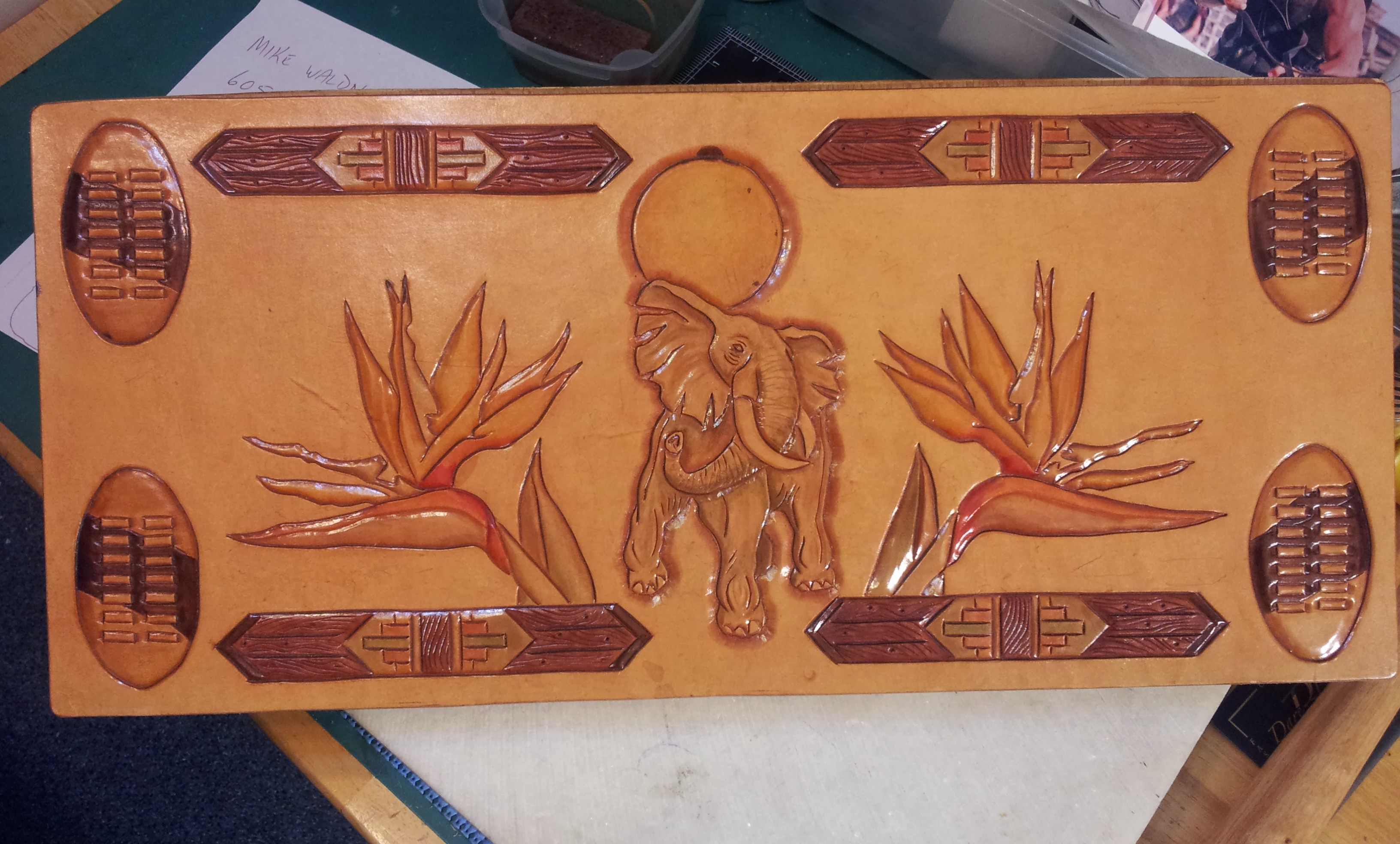In my previous posting I made mention of the tool box colors that have faded so bad. Here it is - a side by side comparrison:
In March 2004, this was the new box lid, done in Fiebing's spirit based dyes:-
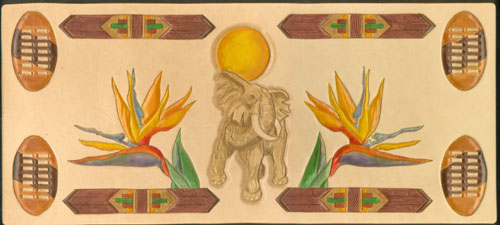
Today, September 29, 2011, I took this picture, but the fading already occured a number of years ago....:
All the yellows and blues are gone.
In June 2004 I did this handbag, also with the Fiebings spirit based dyes (The initials were done in Cova Color enamel acrylics):
In April 2007, after three years, the color had faded completely and the new Eco-Flo dyes had just been introduced. I tested them on this handbag by doing one half in the new water-based dyes. And so on May 15, 2007 I took these three photos of the 'half' restored bag:
I photographed that bag this afternoon to show how well the Eco-Flo dyes have kept its color over the last 4 years:
